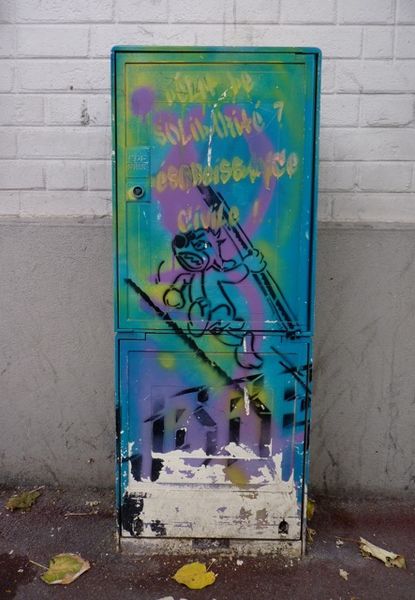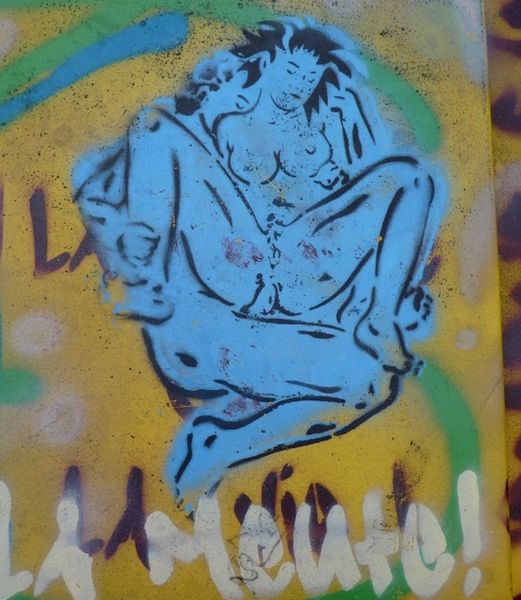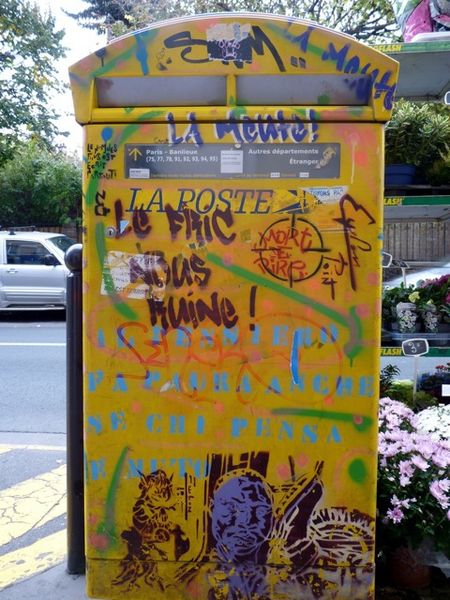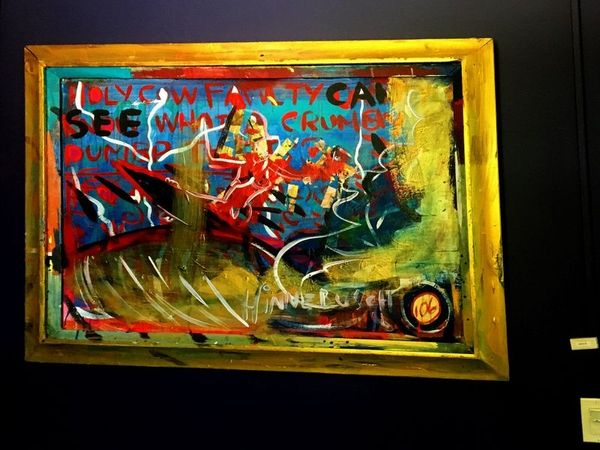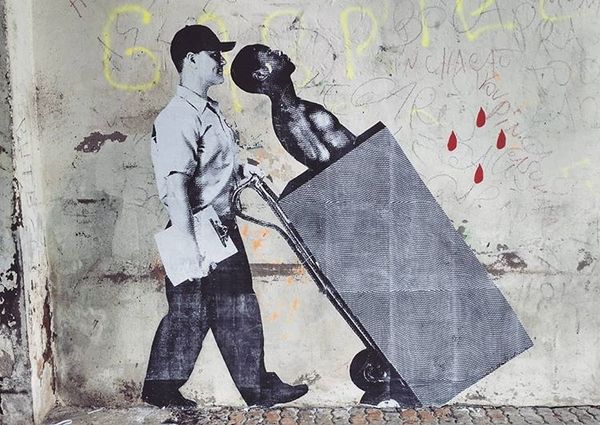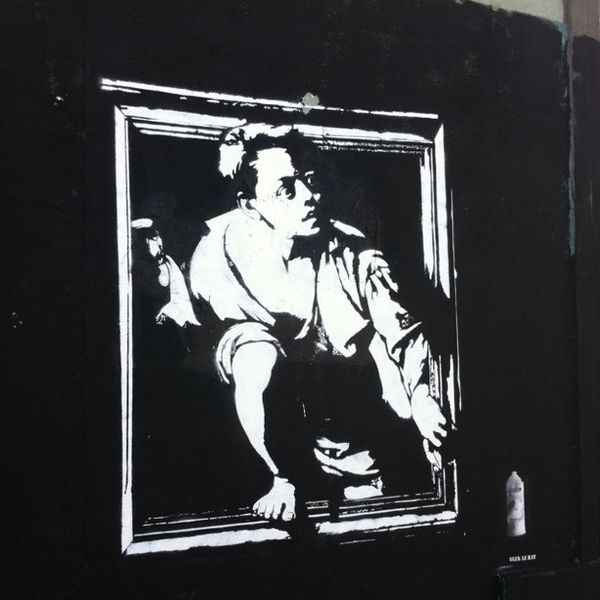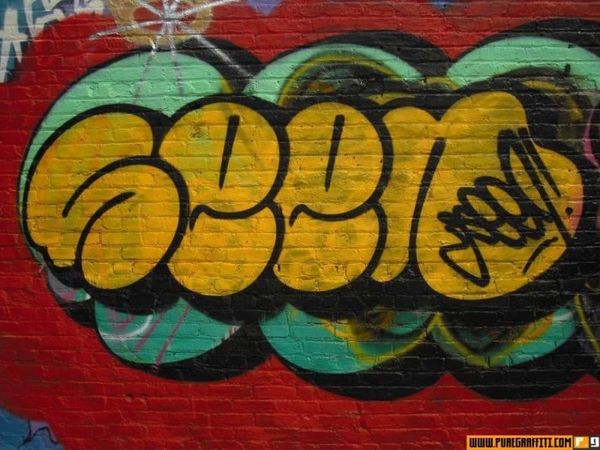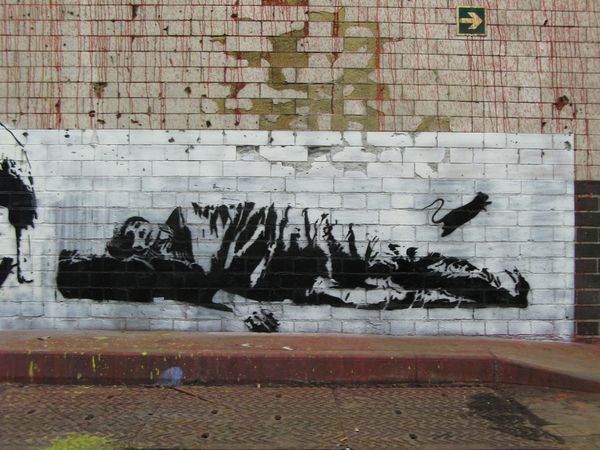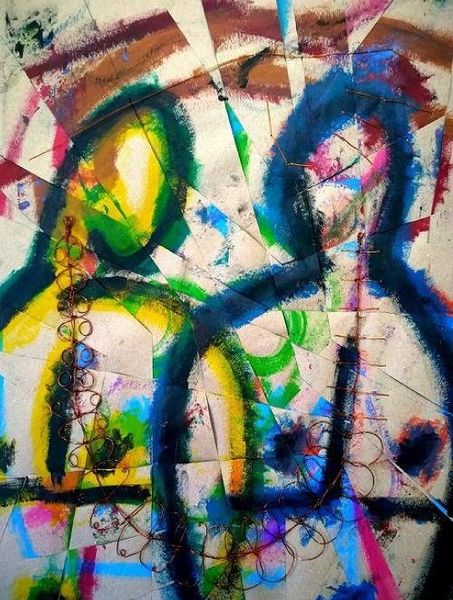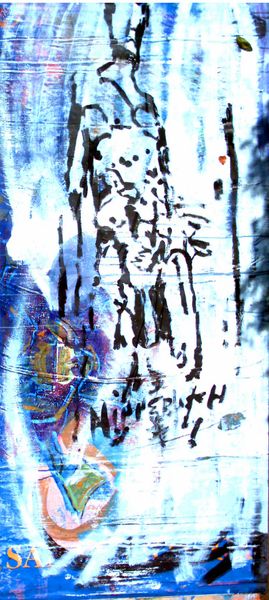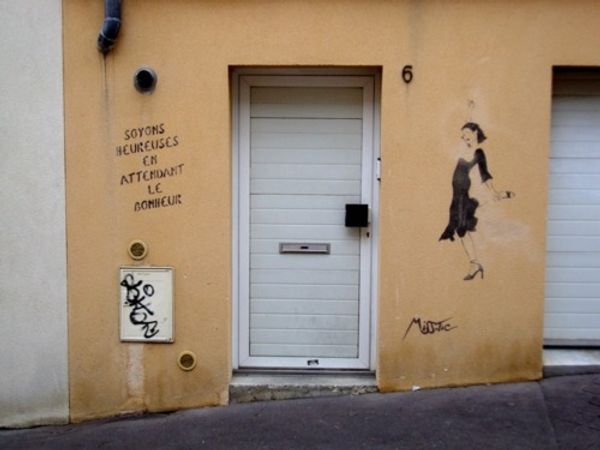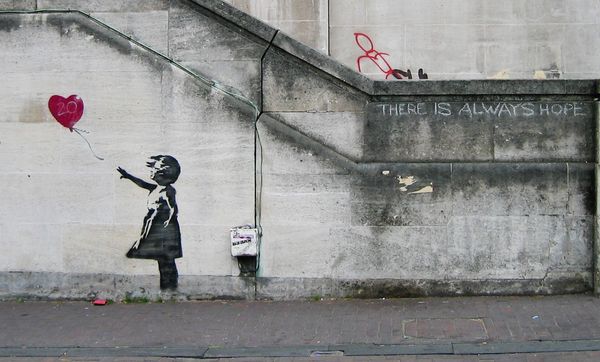
mixed-media, stencil, acrylic-paint
#
graffiti
#
mixed-media
#
pasteup
#
graffiti art
#
street art
#
street-art
#
urban advertising
#
stencil
#
acrylic-paint
#
painted
#
figuration
#
paste-up
#
graffiti-art
#
street graffiti
#
spray can art
#
urban art
#
cityscape
Copyright: Epsylon Point,Fair Use
Editor: This mixed-media work, "89 avenue Paul Vaillant Couturier" by Epsylon Point, combines stencils, paste-ups, and spray paint. It’s hard to pin down a specific mood, but the visual vocabulary speaks of resistance, doesn't it? How do you interpret this work in the context of street art? Curator: Street art, at its core, is a visual rebellion, a democratizing force staking claim in public spaces traditionally reserved for commercial or state-sanctioned messages. This piece, with its anonymous creator and layering of techniques, immediately situates itself within that lineage. What sociopolitical themes do you think emerge from the layered images and text? Editor: Well, the stenciled figures evoke revolutionaries, maybe even soldiers, and the text above seems almost like a rallying cry… But it is quite vague. It does carry a lot of anger and energy, though. Curator: Exactly. And this tension – the contrast between specific figuration and generalized slogan – mirrors the larger questions surrounding street art's efficacy as a tool for change. Is it primarily a symbolic act, or does it truly incite tangible action? How do you think the choice of a utilitarian object like this electrical box as the canvas impacts its message? Editor: It transforms the mundane, I suppose. It makes you question who has the right to occupy these public spaces, and what messages they carry. Is that why street artists choose unusual locations? Curator: In part, yes. Consider Walter Benjamin’s concept of aura: by disrupting the expected context, street artists can challenge our pre-conceived notions. That brings the artwork, its message, closer to a critical observation of modern-day realities. The “canvas” choice isn't accidental; it amplifies the meaning. What does "89 avenue Paul Vaillant Couturier" as a title suggest to you? Editor: That could be read in a literal, spatial sense, maybe calling attention to that specific locale? Or, considering Paul Vaillant Couturier was a communist journalist, that reference could signal anti-establishment beliefs. Thank you! That makes the artwork all the more rich. Curator: Absolutely. This conversation reminds us that the power of art, especially street art, lies not only in its visual aesthetics but also in its ability to spark critical dialogues about power, space, and representation.
Comments
No comments
Be the first to comment and join the conversation on the ultimate creative platform.
